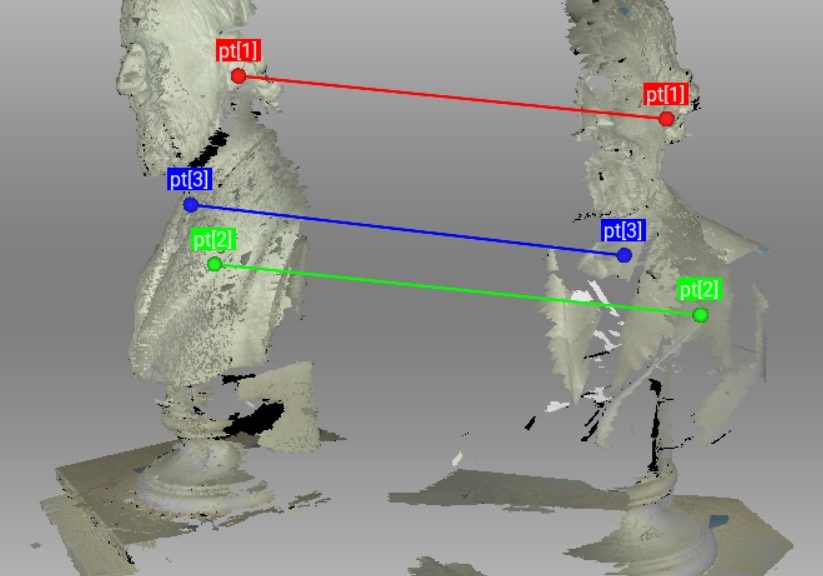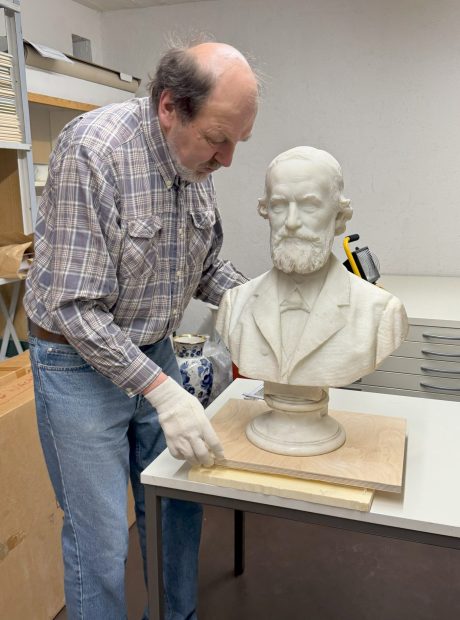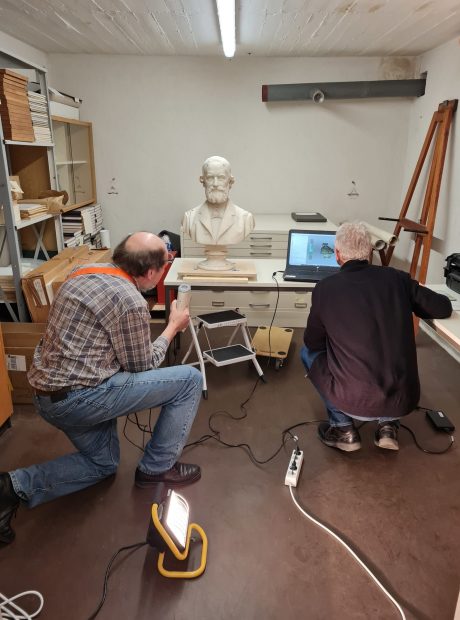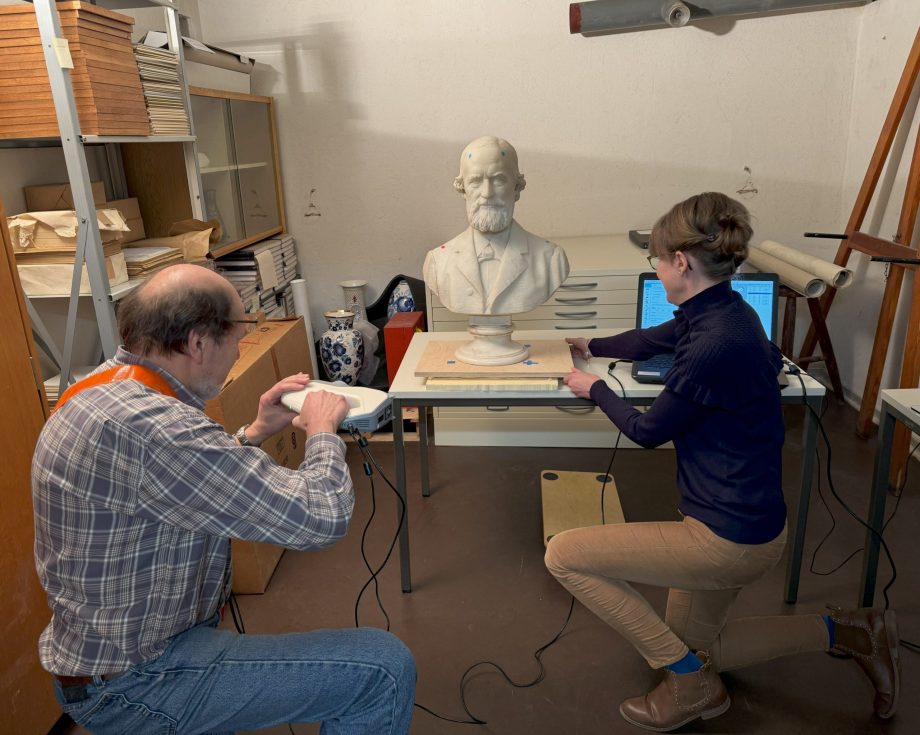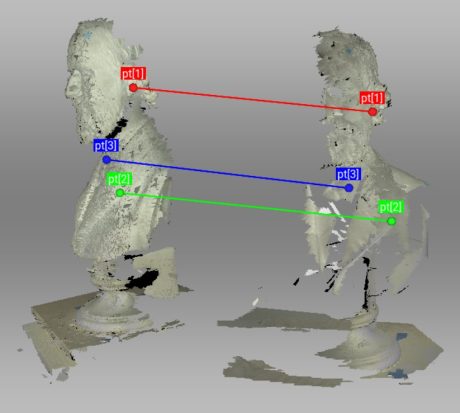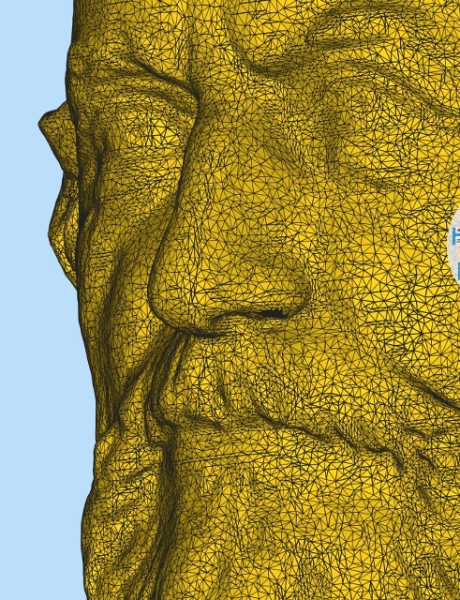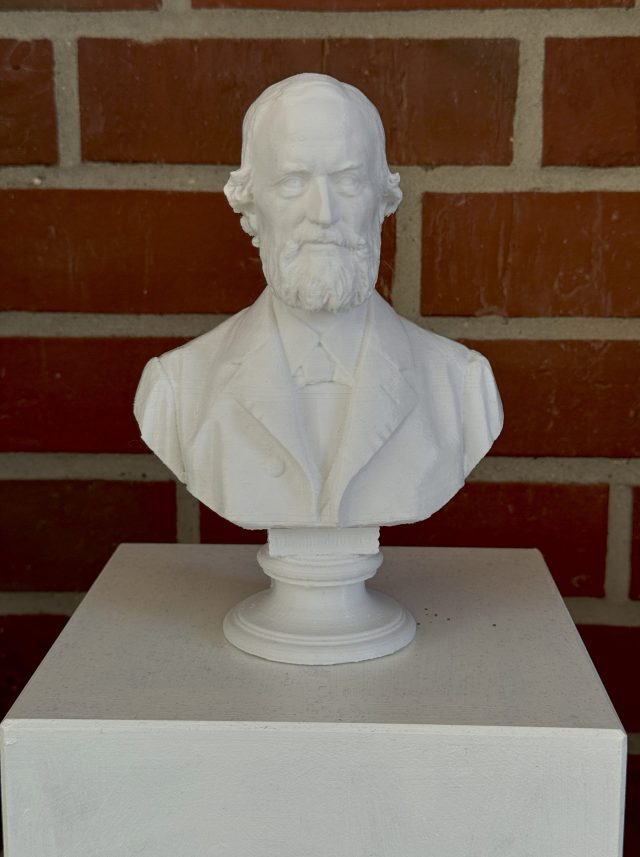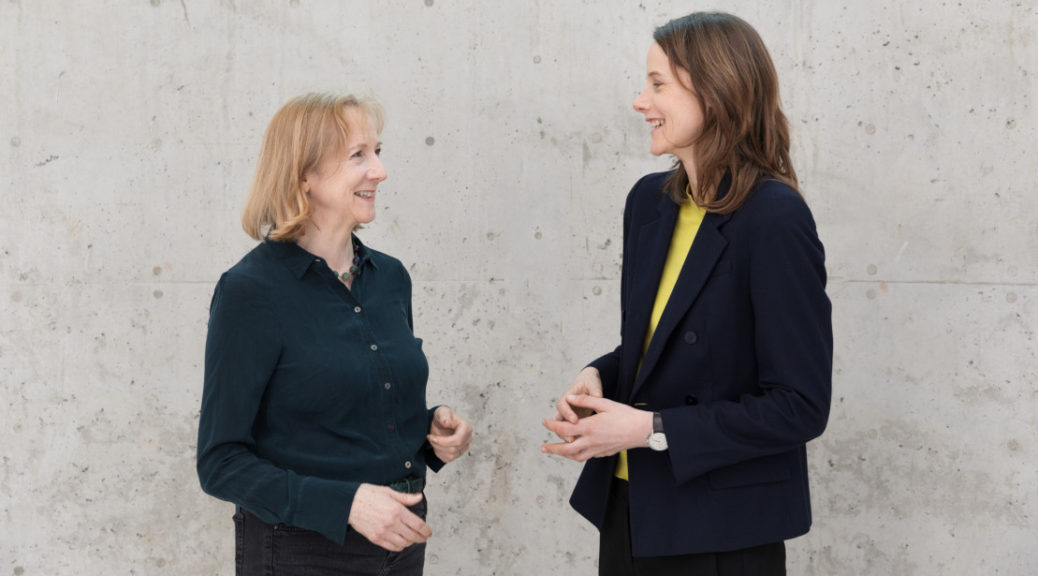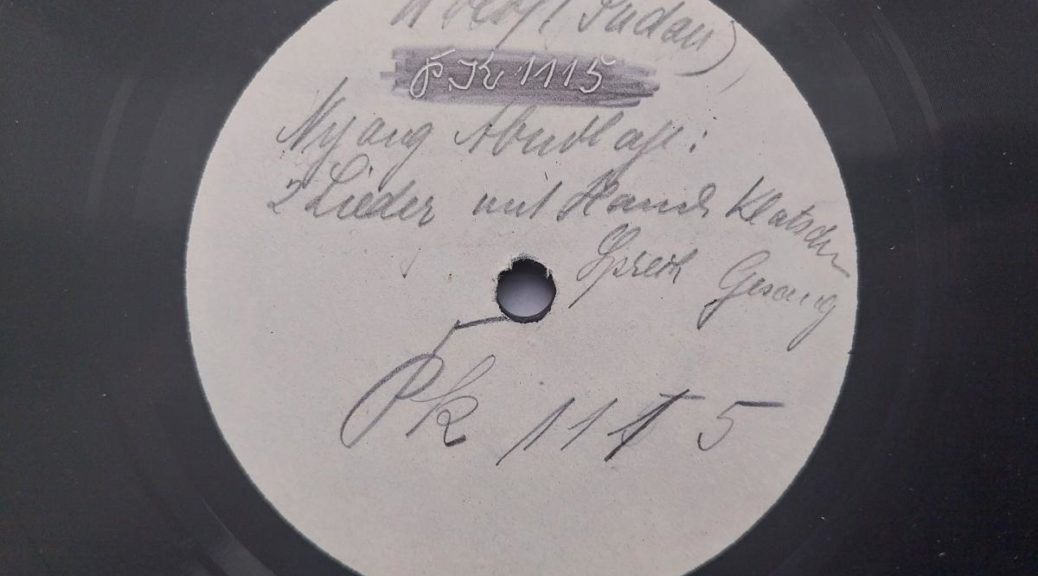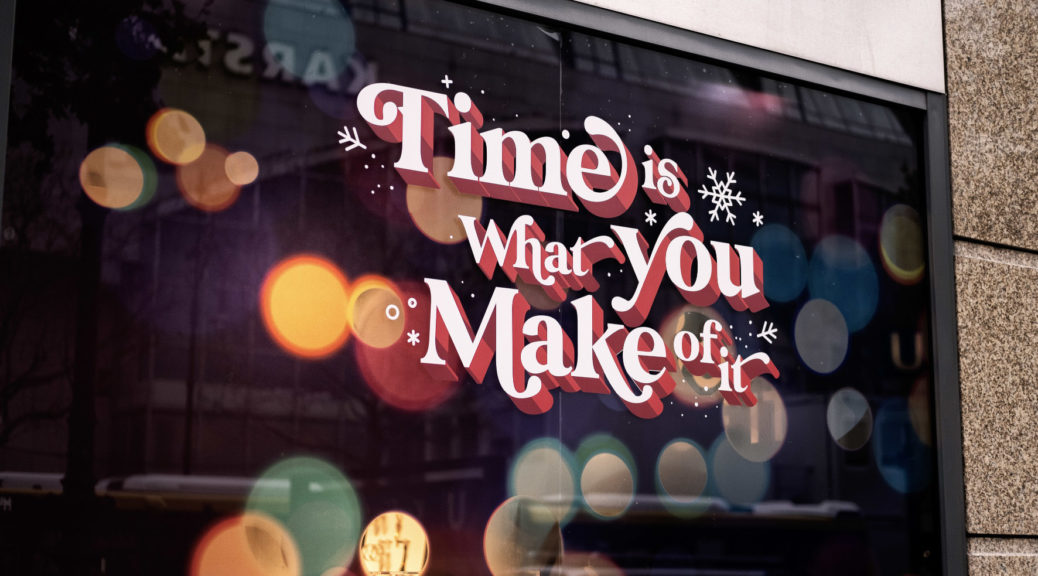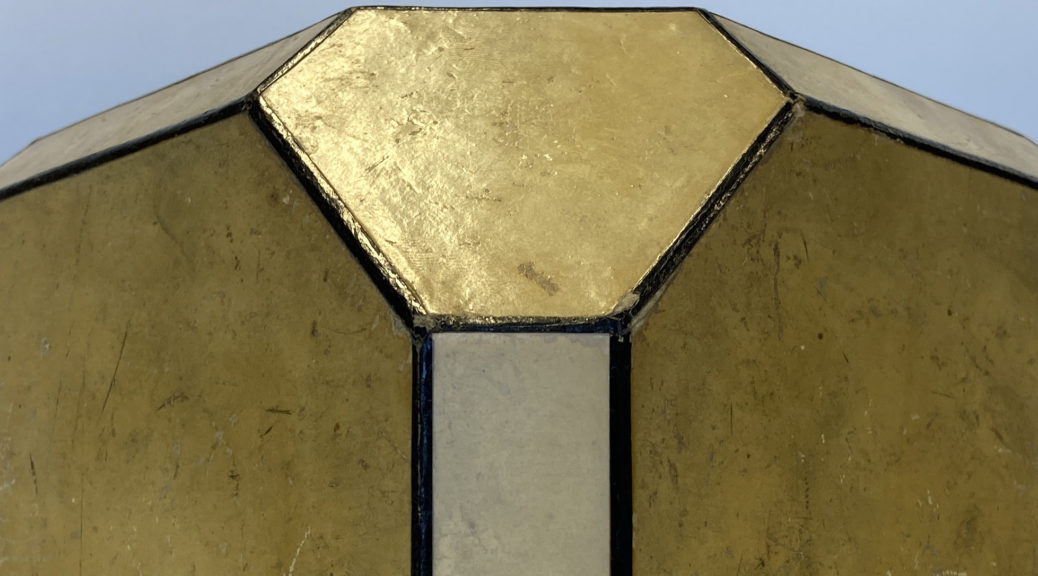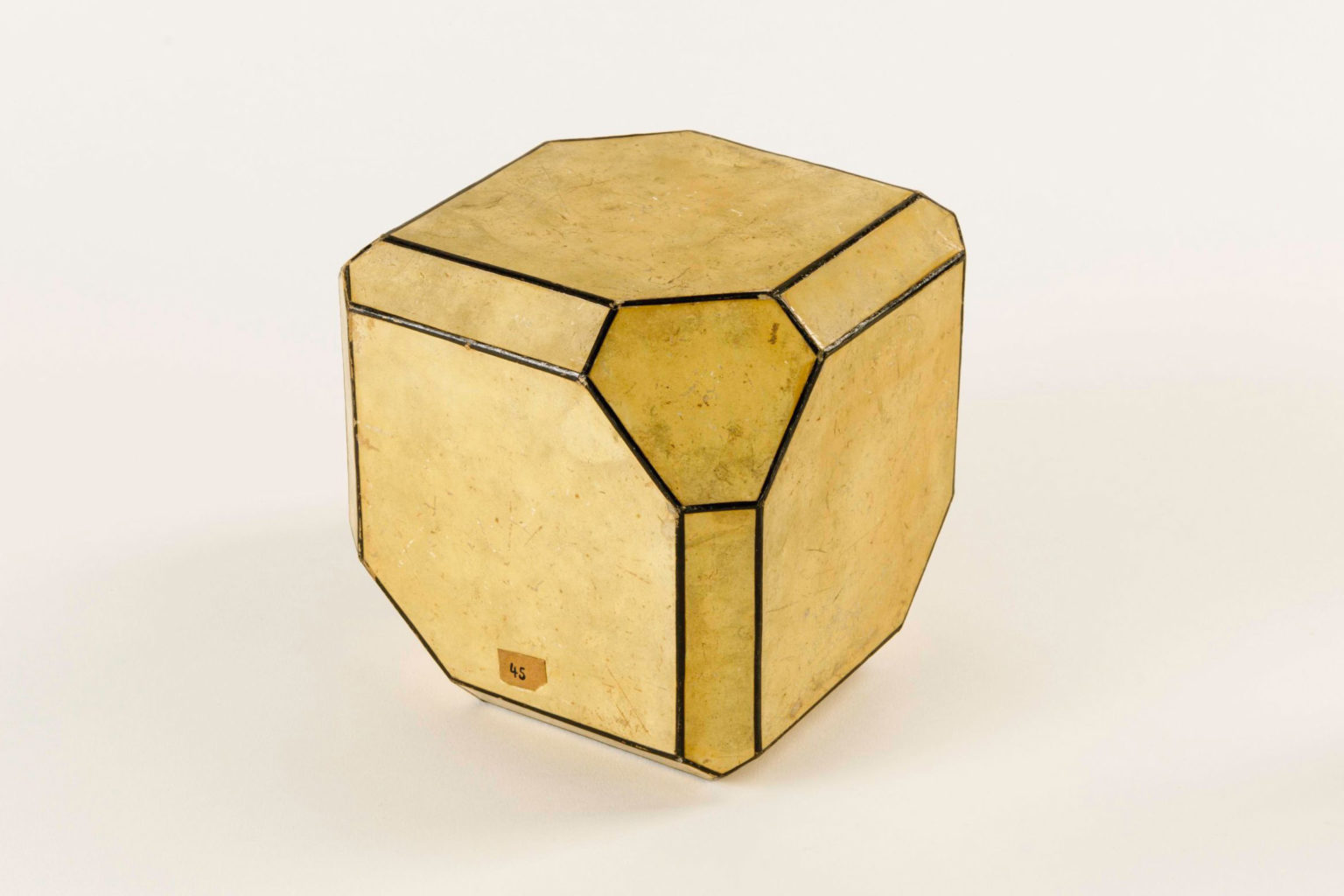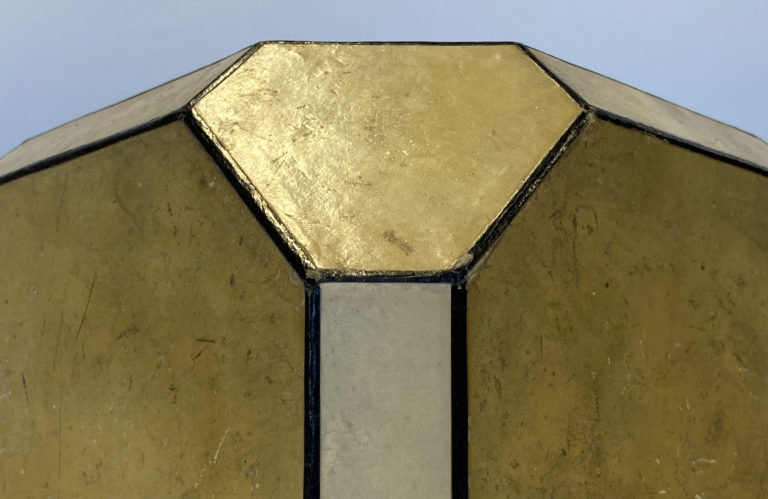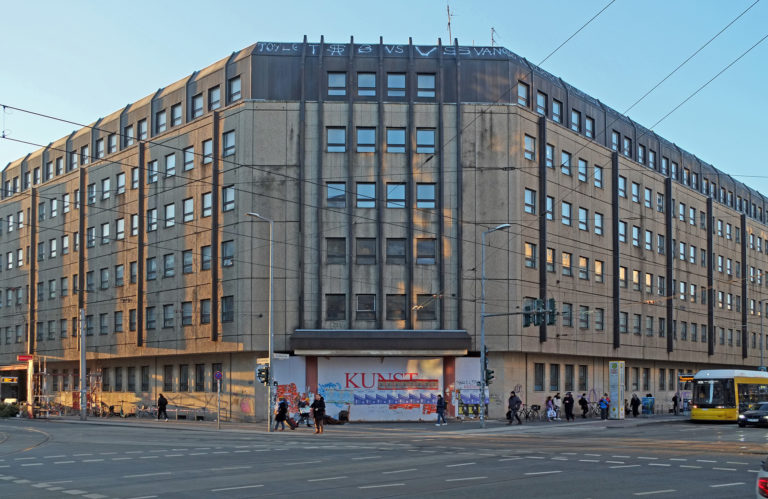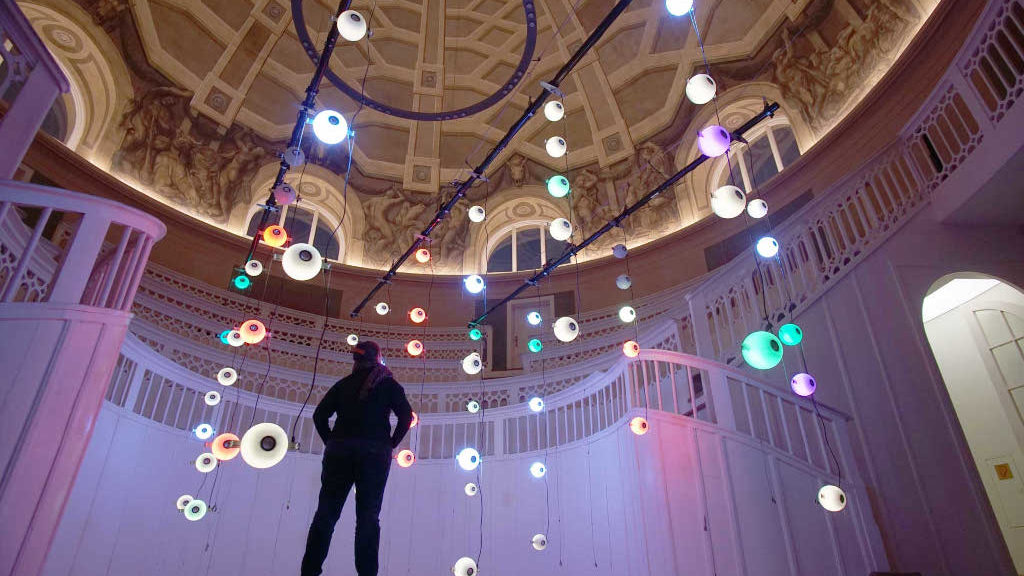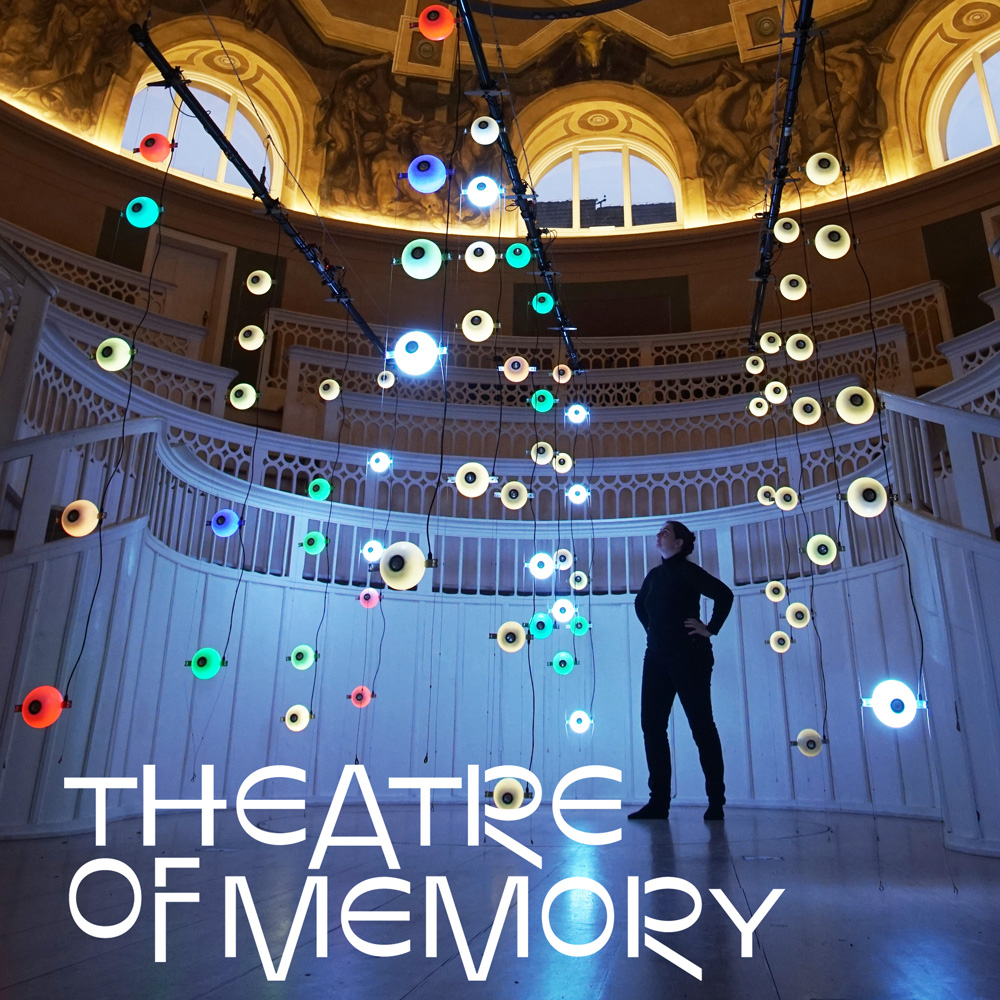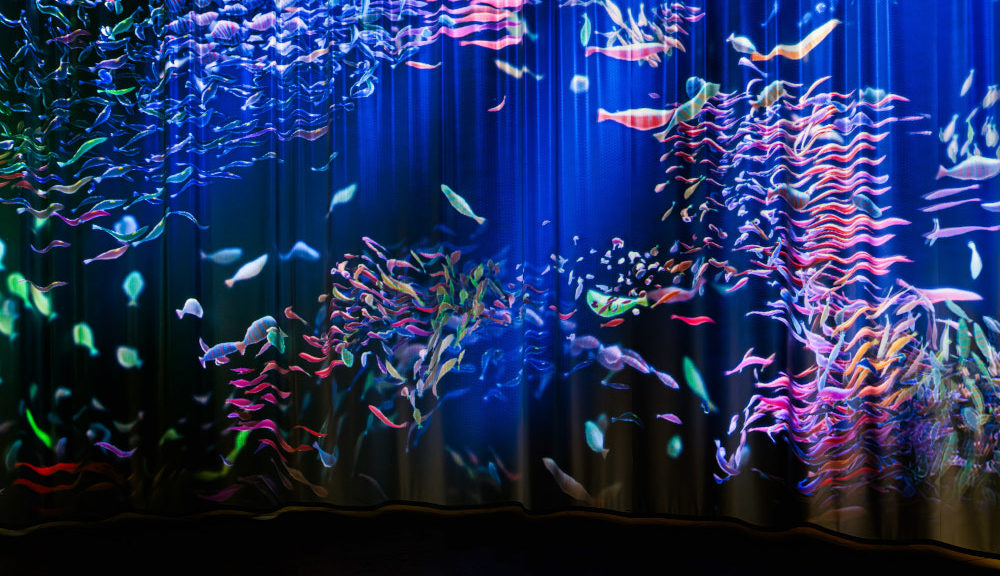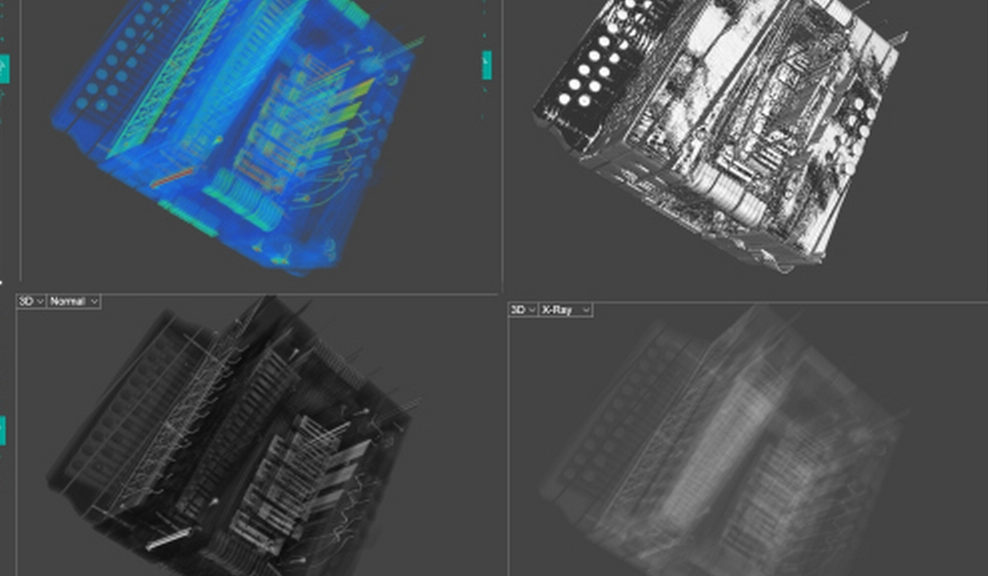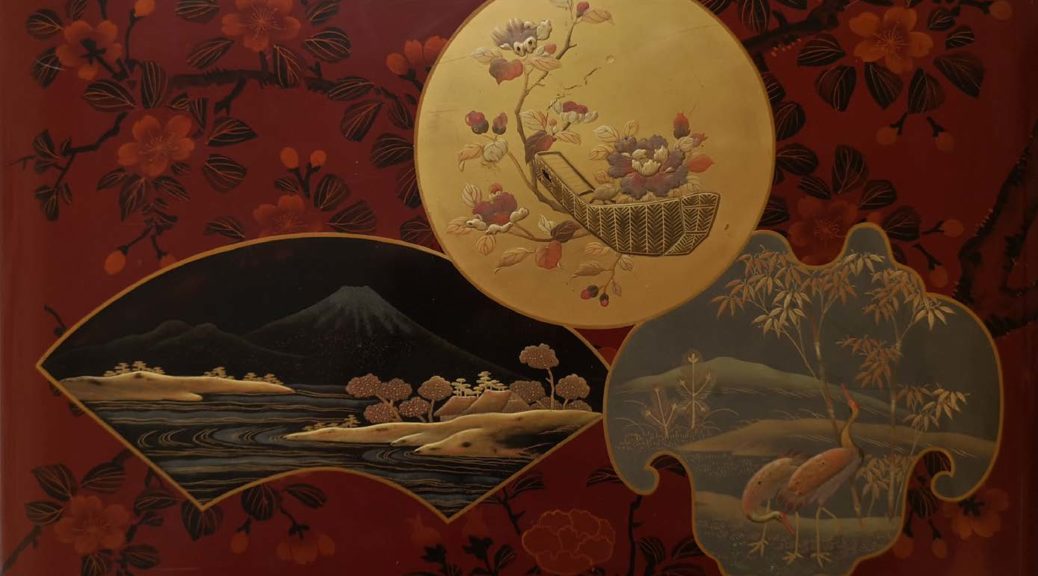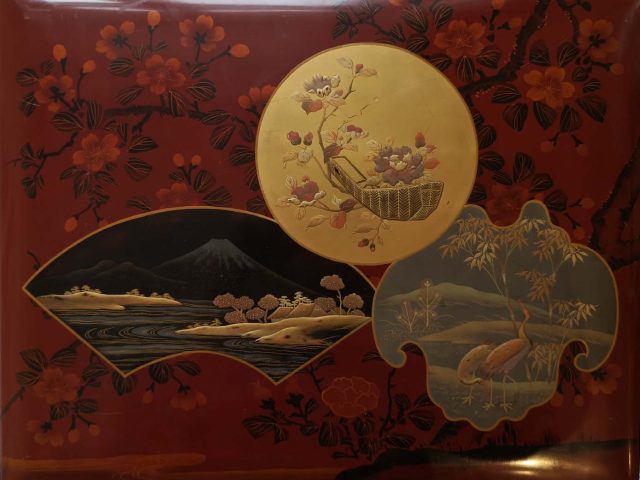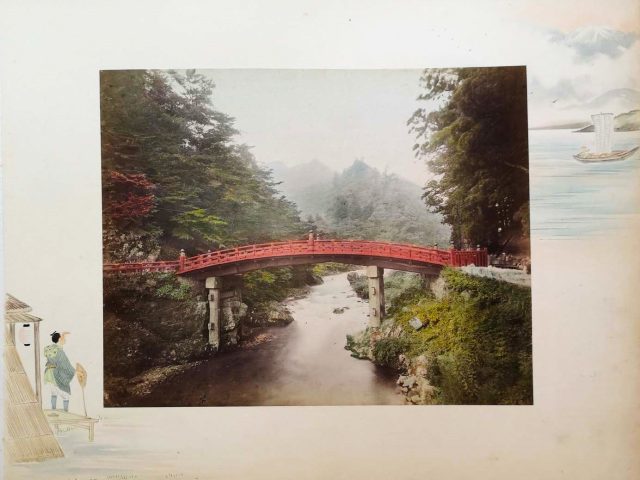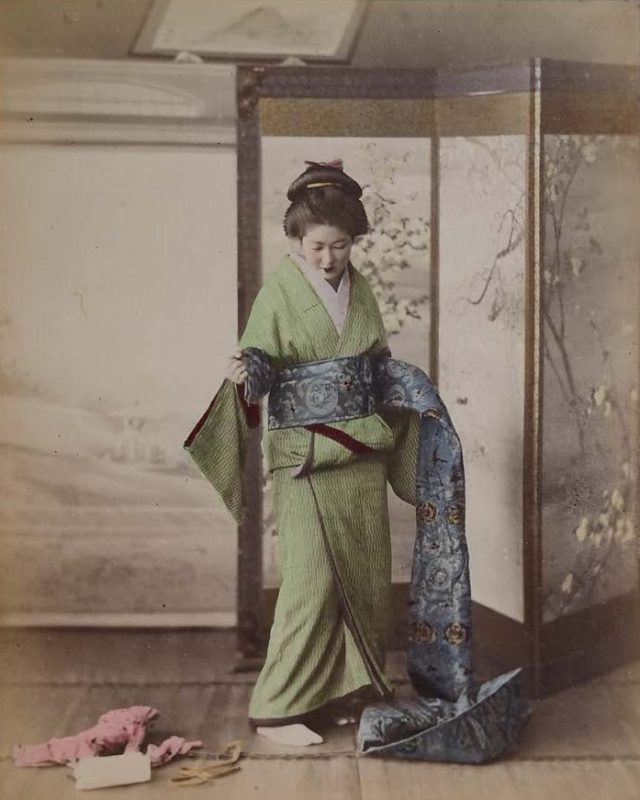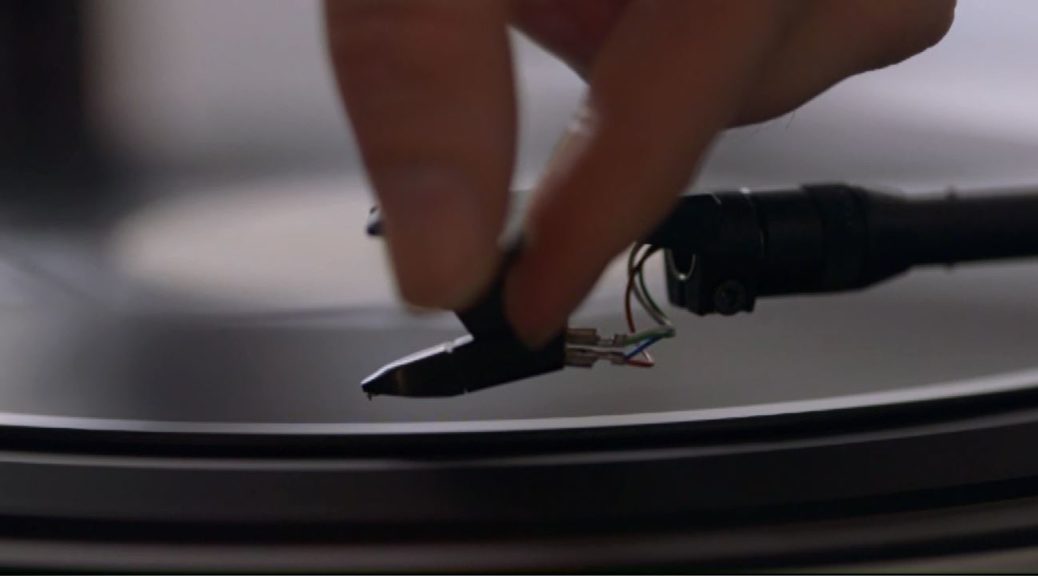A bust of the physicist Robert Gustav Kirchhoff (1824-1887), created in 1888 by the Berlin sculptor Carl Begas, is kept in the stacks of the Kustodie. Until 1929, it stood in the row of other marble busts of honoured professors of the university in the old Aula.
To mark the 200th anniversary of Kirchhoff’s birth, the bust was awakened from its sleep and subjected to a 3D scan. To do this, the work had to be repositioned in the magazine and could be scanned manually without contact using the correct distance, coordinated lighting and a good eye. This difficult task was undertaken by Prof. em. Dr Manfred Paasch, former head of the foundry laboratory at the Berlin University of Applied Sciences, and his former colleague Bernhard Bienia.
Using the EVA-Artec optical 3D scanner, the surface of the bust was scanned by means of slow, sweeping and rotating movements. A turntable was also used to reach all surfaces.
The 3D printer’s software then had to be used to scale the data and define technological specifications such as layer thickness, extruder temperature, auxiliary geometries (support) and more. Layer by layer, the model with a size of 33% was created from the plasticised plastic – in 27 hours of printing time. Finally, technologically necessary supports and auxiliary structures had to be removed.
A nice gimmick or what’s the point?
The 3D print was initially produced as part of the 200th birthday celebrations of Robert Gustav Kirchhoff. However, the bust of Carl Begas could also be used to honour Kirchhoff’s memory. At the suggestion of the former president of the Berlin University of Applied Sciences, Prof. em. Gerhard Ackermann, it could serve as a model for a bust on Kirchhoff’s grave monument that no longer exists today.
It may have been the model for the bronze bust cast by Bernhard Römer in 1889, which is no longer in situ. The marble bust of the HU, which is over 130 years old, could therefore possibly still be an important starting object for a moulding and subsequent bronze casting. The Kirchhoff project thus not only combines old sculptural art with modern digital printing technology, but may also give rise to a new work using traditional hand-casting techniques. The story goes on…
Text and photos: Christina Kuhli/ Manfred Paasch
